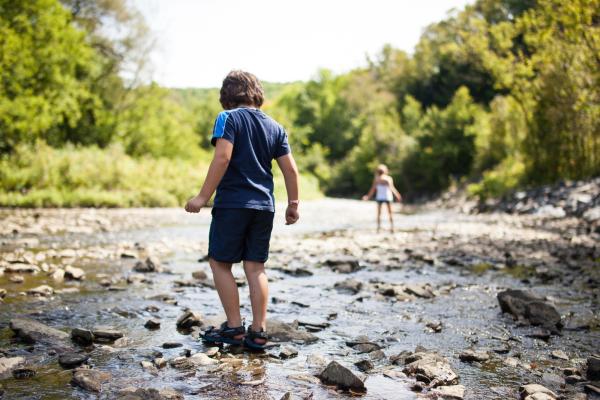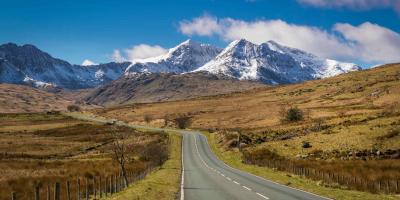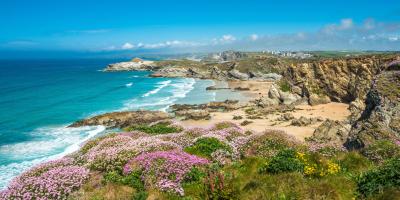To follow a meandering river is to follow the rhythm of nature riven into the earth: its whims, its history, its weaving journey through the land’s geology. It never follows the most direct route from A to B, and that’s one of its most beautiful elements. A riverside walk is a mindset shift, one that almost demands you slow down and pay attention to the minutiae of life that congregates along the banks, an ecosystem in delicate balance.
See the pond skater, the brown trout, the kingfisher, the damselfly, the otter, the heron. Listen to the summer hum of mayflies, the plop of a surfacing fish, the torrent of water squeezing through rocks or gushing over a weir. Float your hand in the cooling water, or jump in, gasping at the chill. Droop your fingers through the bullrushes. And breathe in the fresh, damp air.
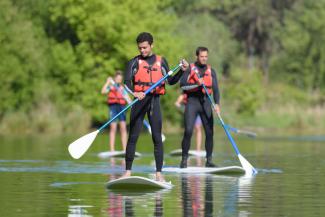
Rivers bring us joy and adventure, fun and health. We walk beside them, fish along them, paddle in them. On the River Derwent in the Peak District there are rapids you can raft down; Devon’s River Dart provides a technical descent for kayakers; on Yorkshire’s River Swale, you can watch paddlers drop over waterfall after waterfall.
It’s no coincidence that some of our classic books are based on rivers: The Wind in the Willows by Kenneth Grahame and Three Men in a Boat by Jerome K. Jerome, for fiction, and non-fiction books including The Flow by Amy-Jane Beer and the essential (really essential) Waterlog by Roger Deakin. Each evokes the woozy, dreamy, unruffled nature of messing about on a river. It is part of our British tradition, part of our life. Some seven and a half million of us routinely head to outdoor swimming spots, including rivers.

Not all sections of a river are idyllic, of course. Navigable rivers double as highways, trading routes and power sources for the settlements alongside them. There are very few towns and cities not built on a river; even Birmingham has well-hidden rivers supplemented by a vast canal network. Rivers and canals alike are often places of industry and graft. Along some canals, the ingenuity of Victorian engineering can be wondered at in places including Foxton Locks on the Leicester line of the Grand Union Canal, Anderton Boat Lift on the Trent and Mersey Canal and the Pontcysyllte Aqueduct on the Llangollen Canal.
However, our waterways, by their nature, are fluid and often carry the things we don’t want to swim in: sewage and pollution.
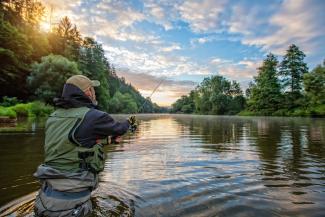
According to The Rivers Trust’s 2024 State of Our Rivers Report, only 15 per cent of our rivers achieve good or above ecological health status. This is Environment Agency data that examines the presence, absence and abundance of species as an indicator of the general health of a river. Taking into account chemical health — the presence of chemical pollutants — not one river is in good, or even, high health. The main reason for this is attributed to agriculture and rural land management, and the second main cause is ‘activities attributed to the water industry’ — treated and untreated sewage, for example.
Reading statistics such as those can scare people away, but in fact, it should be the opposite. If you want to swim in the rivers, do your research first, ask in the area, visit theriverstrust.org to see the health of your local water source, or speak to local swimmers or groups. The vast majority are perfectly swimmable.
And there are causes for optimism. In the words of writer Robert MacFarlane, whose new book Is A River Alive? has already become a bestseller, ‘rivers do heal themselves very fast if you give them the right conditions’. Their future is worth fighting for.
If you’re walking along these waterways, take notice of the wildlife, perhaps join The Rivers Trust’s Big River Watch by downloading the app and spending 15 minutes surveying your local river. Let’s all watch these rivers, for their health, but also ours. It’s about experiencing these beautiful places with all of your senses and introducing others to the joys of the river.
Beautiful riverside walks from hostels
Stroll out of these hostels and straight onto some of the loveliest river walks in England and Wales.
YHA South Downs
River Ouse, Lewes, East Sussex
From the youth hostel, follow the Sussex Ouse Valley Way through Rodmell (and by Monk’s House, Virginia Woolf’s countryside retreat) and head north through Lewes. The prettiest stretch is around Barcombe Mills, where, in the summer, you’ll find picnicking families and bathers swinging off ropes into the meandering river. You can even hire boats from the Anchor Inn pub.
YHA London Thameside
River Thames, Rotherhithe, London
Our bet is to head east along the Thames Path National Trail and follow the last stretch of the 185-mile path that starts at the river’s source in the Cotswolds and finishes at Woolwich. A couple of miles after that and you’ll be in Greenwich, where you’ll find the Cutty Sark and the National Maritime Museum. Then to the O2 Arena and the Thames Barrier.
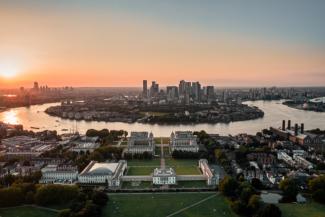
YHA Cambridge
River Cam, Cambridge
Take to the water like Roger Deakin, who writes beautifully about swims in the Cam ("Sunset was coming up, and reflections trembled on the willow trunks"), or rent the classic punt for a posh picnic at Grantchester Meadows. The Fen Rivers Way runs almost 60 miles north from Cambridge, by pastures, through the Fens to the Wash at King’s Lynn.
YHA Hartington Hall
River Dove, Peak District
Just under a mile from the hostel is the River Dove, one of the most beautiful stretches of river anywhere (for our money). Head south to Wolfscote Dale, as idyllic a Peak District landscape as could possibly be. Explore the caves, trot across the Stepping Stones and cross ancient bridges. On the return, fork right into Biggin Dale and work your way around Wolfscote Hill.
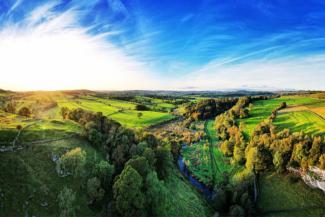
YHA Grinton Lodge
River Swale, Swaledale, Yorkshire Dales
Look down from this Victorian hunting lodge to see the River Swale, and the quintessential patchwork Yorkshire Dale it offers its name to. The river is considered to be the fastest flowing in England (the word ‘Swale’ derives from an Anglo-Saxon word meaning rapid) and attracts experienced paddlers who drop down its waterfalls. There’s a path along most of the river west, but make a loop out of it and return across the moors.
YHA St Briavels Castle
St Briavels, Gloucestershire
This 12th-century castle is only a 20-minute walk from one of the most scenic stretches of the River Wye, near Llandogo and Tintern. Here, the wide river quietly flows through woodland, but the number of medieval ruins, including the magnificent Tintern Abbey and, of course, St Briavels Castle, belies the historical tumult of the area. Today, the river is perfect for canoeing, kayaking and paddleboarding.
YHA Keswick
River Greta, Lake District
Across our entire network, YHA Keswick is probably the hostel nearest to a river. More than likely, you’ll hear the relaxing shush of the water while having breakfast. Both Wordsworth and Coleridge wrote about the noise the river makes as it hits the boulders. The River Greta is a tributary of the River Derwent, and upstream, on the other side of Derwent Water, you’ll find YHA Borrowdale, also within earshot of the river.
